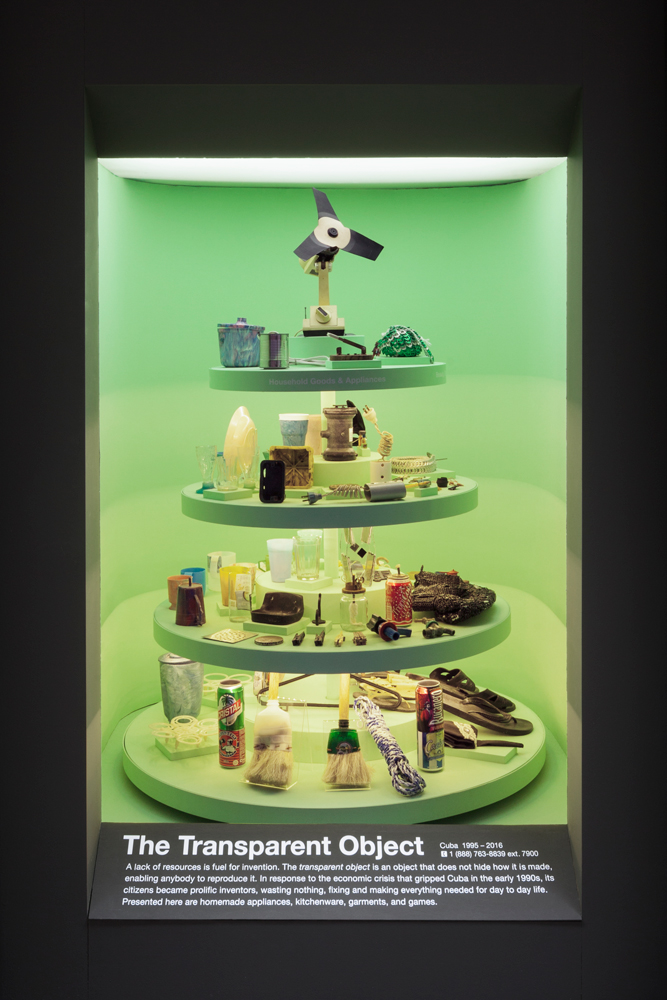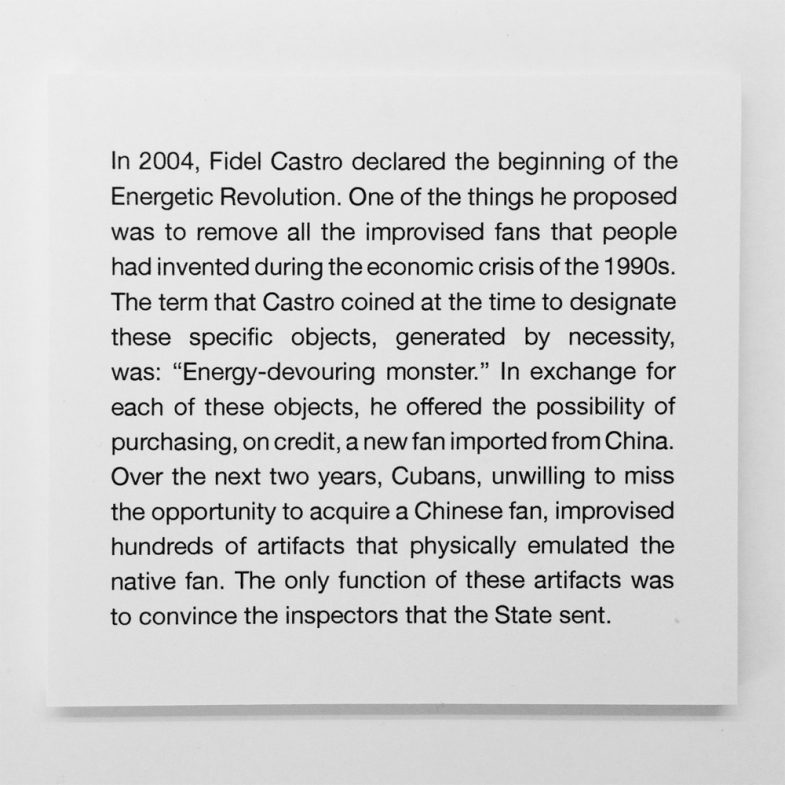
The transparent object at Mmuseumm 2, 2017. Photo by Alex Kalman

The transparent object. Double-sided poster/tabloid for exhibition, 1000 copies. Printed by Linco Printing NY, 2017

The transparent object at Mmuseumm 2, 2017. Photo by Alex Kalman
Special Period in Times of Peace was how the Cuban government termed the country’s crisis in 1990. The Soviet demise brought bilateral trade to a halt, resulting in a deep economic crisis on the island. Cuba’s international isolation and domestic shortages were made more acute by the longstanding U.S. embargo.
Commercial networks fell apart. There was no fuel to maintain either a public transportation system or the electricity grid. All industry slowed down dramatically due to shortages in primary materials and a lack of access to international markets. Cubans saw their surroundings, from their domestic space to their urban environment, deteriorate at an accelerated pace.
The country’s centralized economy imploded at its inner core: the home. The family became an autonomous economic unit. Workers, musicians, physicians, athletes –all had to confront the severe scarcity of resources with creativity and cooperation.
The transparent object is an early 20th century concept formulated by Boris Arvatov, a Soviet theorist of productivism. In his critique to the object and the capitalist mode of production, he called for a transparent object that would not hide the traces of its production. In absence of a conducive economic context for the production of transparent socialist objects, Arvatov suggested the provisional transformation of capitalist objects, according to the new social demands.
From this perspective, many of the objects created in Cuba during the crisis can be considered transparent objects. They are artifacts that render visible the social and collaborative relations among individuals, confronted with pressing needs and constrained by specific material, technological and intellectual resources. Objects apparently useless were torn apart for repair, reuse and recycling, and the technical knowledge thereby obtained was socialized among friends and neighbors. In many cases, reinvented objects were self-explanatory, and their technological process of production easily replicated.
One more turn around. A vinyl record rotates like the blade of a repaired Soviet fan. They spin, vinyl record and fan, on a rotating commercial display that returns like a tactic productivist display that seeks the passerby’s activation. Another turn around…
————
Curated by Alex Kalman
Text by Ernesto Oroza for Mmuseumm, 2017
Color of the display was commissioned to Architect Fabián Martínez
Special thanks to Clara Astiasarán, Ariana Hernández-Reguant and Pernod Ricard Fellowship-2016 at Villa Vassilieff.
Mmuseumm
4 Courtlandt Alley
NYC, NY 10013



















